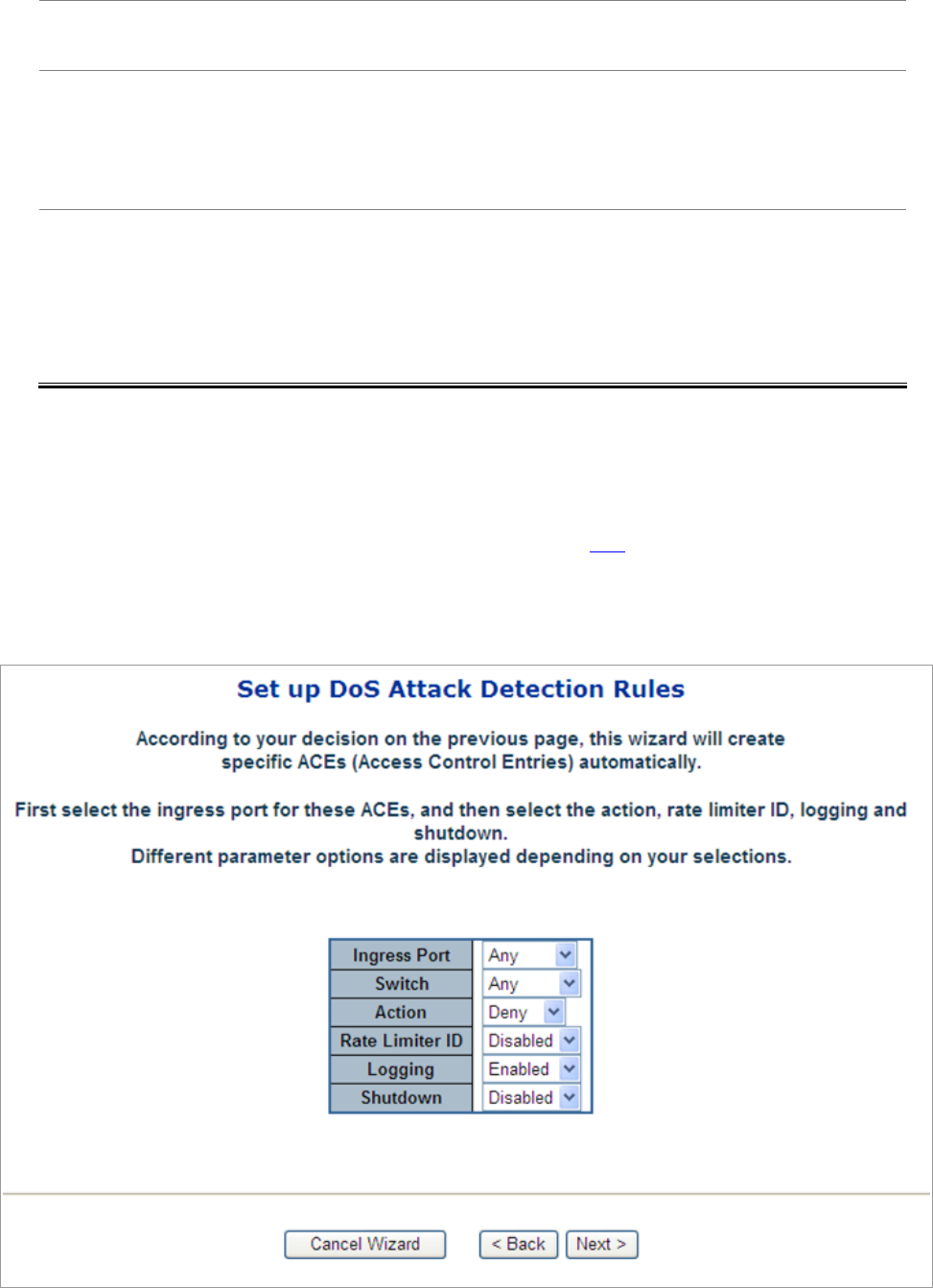Manual
Table Of Contents
- 1. INTRODUTION
- 2. INSTALLATION
- 3. SWITCH MANAGEMENT
- 4. WEB CONFIGURATION
- 4.1 Main WEB PAGE
- 4.2 System
- 4.3 Simple Network Management Protocol
- 4.4 Port Management
- 4.5 Link Aggregation
- 4.6 VLAN
- 4.7 Rapid Spanning Tree Protocol
- 4.8 Quality of Service
- 4.9 Multicast
- 4.10 IEEE 802.1X Network Access Control
- 4.10.1 Understanding IEEE 802.1X Port-Based Authentication
- 4.10.2 802.1X System Configuration
- 4.10.3 802.1X and MAC-Based Authentication Port Configuration
- 4.10.4 802.1X Port Status
- 4.10.5 802.1X and MAC-Based Authentication Statistics
- 4.10.6 Windows Platform RADIUS Server Configuration
- 4.10.7 802.1X Client Configuration
- 4.11 Access Control Lists
- 4.12 Address Table
- 4.13 Port Security (To be Continued)
- 4.14 LLDP
- 4.15 Network Diagnastics
- 4.16 Stacking – SGSW-24040 / SGSW-24040R
- 4.17 Power over Ethernet (SGSW-24040P / SGSW-24040P4)
- 5. COMMAND LINE INTERFACE
- 6. Command Line Mode
- 6.1 System Command
- 6.2 Port Management Command
- 6.3 Link Aggregation Command
- 6.4 VLAN Configuration Command
- 6.5 Spanning Tree Protocol Command
- 6.6 Multicast Configuration Command
- 6.7 Quality of Service Command
- 6.8 802.1x Port Access Control Command
- 6.9 Access Control List Command
- 6.10 MAC Address Table Command
- 6.11 LLDP Command
- 6.12 Stack Management Command
- 6.13 Power over Ethernet Command
- 7. SWITCH OPERATION
- 8. POWER OVER ETHERNET OVERVIEW
- 9. TROUBLE SHOOTING
- APPENDEX A
- APPENDEX B : GLOSSARY

User’s Manual of WGSW-24040 Series
SGSW-24040/24240 Series
179
packet of destination unreachable to the spoofed source address. Eventually
leading it to be unreachable by other clients and the system will go down.
• ICMP DoS - Ping of
Death
A malicious attacker sending a malformed ICMP request packet larger than the
65,536 bytes to the target system. Some target systems cannot handle the
packet larger than the maximum IP packet size, which often causes target
system froze, crashed or rebooted.
• ICMP DoS - Smurf
A malicious attacker sending a malformed ICMP request packet with broadcast
destination addresses to the target system. After receiving the packet, all
reachable hosts send an ICMP echo reply packet back to the spoofed source
address. Thus, the target host will suffer from a larger amount of traffic
generated.
4.11.3.6 Set up DoS Attack Detection Rules
According to your decision on the previous page, this wizard will create specific ACEs (Access Control Entries) automatically.
First select the ingress port for the ACEs, and then select the action, rate limiter ID, logging and shutdown.
Different parameter options are displayed depending on the frame type that you selected.
Figure 4-11-11 Set up DoS Attack Detection Rules page screenshot










